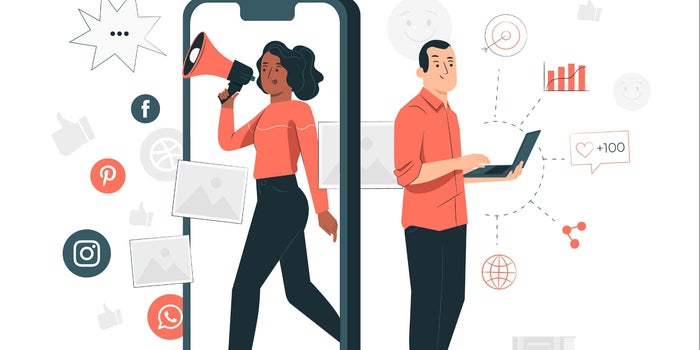Conversational marketing is a feedback-oriented, personalized, one-on-one marketing practice. It uses two-way communication to identify interests of potential customers and communicate with them using offers and information relevant to them. The communication aims at knowing what the customer wants directly from the brand compared with following traditional methods such as demographic study and usage tracking. Marketers want to have one-on-one conversations with their customers to learn what they are looking for, and develop a stronger, long-term relationship with them. These make conversions easier, faster and boost brand loyalty.
This is the perfect sweet spot for chatbots to make these conversions. Chatbots are applications interacting in a conversational mode and the need for personalized, one-on-one marketing and sales can be worked on by using AI. AI-enabled bots can learn from customer interactions, collect feedback and map out the likes and dislikes of a user. Messaging as a channel has a greater penetration in the consumer market. With messaging and AI coming together in chatbots, the goals of conversational marketing can be fulfilled at scale.
Potential Of AI In Terms Of Transforming Customer Interactions
A few examples of AI-enabled conversational marketing are:
- User sees an ad and clicks on it and lands on the bot.
- Bot responds instantly with context of the ad clicked.
- User continue the interaction on chat.
If the user decides not to take the conversation ahead, the chatbot continues, if users have opted-in, to follow up by sharing relevant information and in some cases, even personalized offers and generate interest. The nurturing boosts conversion and enhances the relationship between the user and the brand.
Marketers can experiment with chatbots and try newer technologies and approaches to reach out to their audience.
Did you know, 66 per cent of purchasers said the reason for choosing a company was consistent and relevant communication? Businesses that use chatbots report a retention growth of 1.5-2 times.
While customer support seems like an obvious use case for a chatbot, there are inherent challenges in making a good customer support bot. If you build one without the proper know-how you can end up hurting your customer experience rather than improvising on it. Chatbot conversational marketing, on the other hand, is an innovative, simple, yet powerful way to earn your users’ trust.
Some ways to use chatbots for marketing campaigns
Bot as a landing page: Bots provide a great advantage here. On this landing destination, you don’t need to ask your users for their contact details, you can keep in touch with them via a bot.
The lead generator: Collect information, follow up and convert your customers on chat using lead generation chatbot.
Timely notifications: Not all users have all the apps, however, they have messengers. Through chatbots, messengers can be used as powerful and flexible notification channels. Be it attractive offers, flash sale, personalized discount coupons or new product launches, you reach out to your users via notifications.
Engagement engine: Drive user engagement by running interactive polls, surveys, quizzes and more. Engage your users with rich-media driven content.
Collect feedback: Reviews and feedback have more quality and genuinity when collected one-on-one. You can take crucial business decisions based on the feedback collected. You can choose to respond personally to some feedback you receive.
Source: entrepreneur.com









